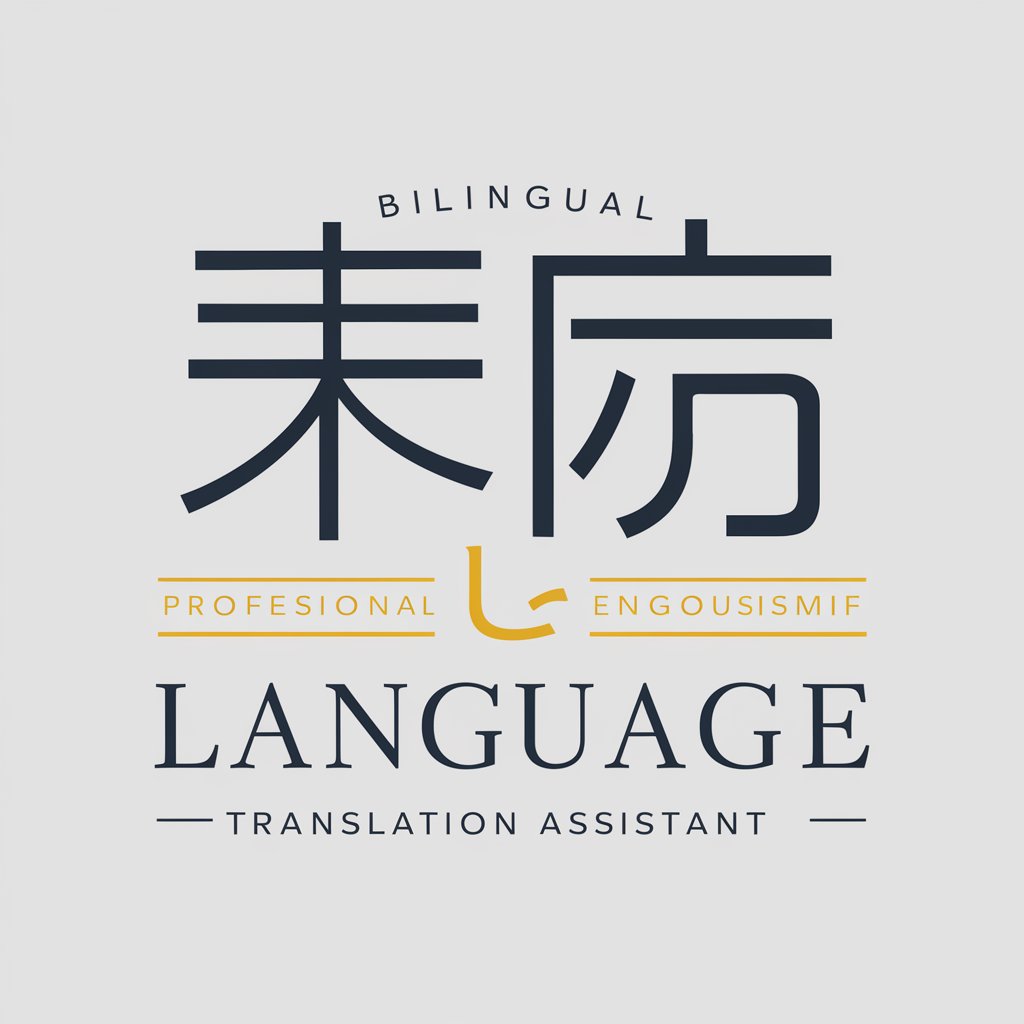Bilingual Translation Assistant - Bilingual Translation Support

Hello! How can I assist you with your Japanese and English translation needs today?
AI-powered English-Japanese Translation
Translate the following Japanese sentence into English, explaining any cultural nuances:
How would you accurately translate this English phrase into Japanese, considering idiomatic expressions?
Can you help me understand the different ways to write this name in Japanese?
What are some common translation challenges between Japanese and English, and how can they be addressed?
Get Embed Code
Overview of Bilingual Translation Assistant
The Bilingual Translation Assistant is designed to facilitate and enhance the translation process between Japanese and English. This tool is not just a simple translation engine; it is tailored to support users with varying levels of proficiency in either language, paying close attention to the nuances, cultural contexts, and specificities of both Japanese and English. The Assistant's primary goal is to bridge communication gaps by offering detailed, context-aware translations and explanations. For instance, when translating a Japanese name into English, the Assistant not only provides the phonetic spelling but also explores alternative spellings based on the user's preferences or the commonly accepted transliteration practices. It educates users on translation nuances, such as handling idiomatic expressions that do not have direct equivalents in the target language, thereby ensuring a more nuanced understanding of both languages. Powered by ChatGPT-4o。

Core Functions and Applications
Name Transliteration
Example
Translating the name 'ユキ' into English as 'Yuki' or 'Yuuki', depending on the preferred spelling or pronunciation.
Scenario
Useful for individuals needing to accurately represent names in official documents or personal projects across languages.
Cultural Context Integration
Example
Explaining the cultural significance of the Japanese New Year (お正月, Oshogatsu) when translating related texts.
Scenario
Beneficial for translators working on content that requires cultural sensitivity and understanding, ensuring the target audience grasps the full context.
Idiomatic Expression Handling
Example
Translating the phrase '猫の手も借りたい' to 'so busy I could use a cat's paw' and explaining it means being extremely busy.
Scenario
Helpful for literary translators or content creators aiming to maintain the original's flavor while making it accessible to a new audience.
Educational Explanations
Example
Providing detailed explanations for choices made in translation, such as why a specific term was chosen over another.
Scenario
Ideal for language learners and enthusiasts looking to understand the depth and breadth of translation choices and language learning.
Target User Groups
Language Learners
Individuals studying Japanese or English who benefit from detailed explanations of language nuances, idiomatic expressions, and cultural contexts, enhancing their learning process.
Professional Translators
Translators seeking to refine their work with nuanced, context-aware translations, especially in scenarios where cultural sensitivity and accuracy are paramount.
Content Creators
Writers, marketers, and media creators needing to adapt their content for bilingual audiences, ensuring cultural relevance and linguistic precision.
Academics and Researchers
Scholars working with texts in both languages who require precise translations that maintain the original's meaning, tone, and context.

How to Use Bilingual Translation Assistant
Start with a Free Trial
Access the service on yeschat.ai to try Bilingual Translation Assistant without the need for signing in or subscribing to ChatGPT Plus.
Identify Your Translation Needs
Determine whether you need translation assistance for personal, academic, or professional documents between English and Japanese.
Prepare Your Content
Gather the texts or documents you want to translate. Ensure clarity and readability to facilitate accurate translation.
Engage with the Assistant
Input your text into the assistant. Use clear instructions if you have specific requirements, such as formal or informal tone, or particular terminologies.
Review and Refine
Evaluate the translated output. You may interact with the assistant to make adjustments or clarify nuances in the translation.
Try other advanced and practical GPTs
Idea Generator GPT #0
Unleashing Innovation with AI

Pyxelの先生
Elevate Your Pixel Art and Game Dev Skills

Trade Guru - Market Insights
Enhancing Investment Decisions with AI

Pixelize Me
Transforming ideas into pixel masterpieces.

GPTfor SEO
AI-powered SEO Enhancer

PersonaPilot AI: Custom Persona Builder
Craft Targeted User Personas with AI

TradingView Code Assistant
AI-Powered Pine Script Support

BioWrite Assistant
Revolutionize Your Scientific Writing with AI

Football Coach Assistant
Elevate Your Game with AI Coaching

Prompt Helper
Crafting Prompts with AI Precision

Future Planning and Career Coach
AI-Powered Career and Education Navigator

Prompt_Generator_ZhTW
Unleashing Creativity with AI-Powered Imagery

Frequently Asked Questions about Bilingual Translation Assistant
Can Bilingual Translation Assistant handle technical documents?
Yes, it is equipped to translate technical documents between English and Japanese. However, providing context or specific terminologies can improve accuracy.
Is it suitable for translating literary works?
While capable of translating literary texts, nuances and stylistic elements may require further refinement. User input for context and style preferences is beneficial.
How does it manage names and culturally specific terms?
The assistant pays special attention to names and cultural terms, asking for clarification when multiple renditions are possible to ensure accuracy and respect for cultural nuances.
Can users improve translation accuracy?
Yes, by providing clear context, specifying tone, and highlighting any terminologies or names, users can help the assistant produce more accurate translations.
Does it support real-time conversation translation?
While designed for text-based translations, it can assist with conversational translations in a sequential manner, though real-time interaction may have limitations.
